The AMD Ryzen AI 9 HX 370 Review: Unleashing Zen 5 and RDNA 3.5 Into Notebooks
by Gavin Bonshor on July 28, 2024 9:00 AM ESTRendering & Simulation Performance
Rendering tests, compared to others, are often a little more simple to digest and automate. All the tests put out some sort of score or time, usually in an obtainable way that makes it fairly easy to extract. These tests are some of the most strenuous in our list, due to the highly threaded nature of rendering and ray-tracing, and can draw a lot of power.
If a system is not properly configured to deal with the processor's thermal requirements, the rendering benchmarks are where it would show most easily as the frequency drops over a sustained period of time. Most benchmarks, in this case, are re-run several times, and the key to this is having an appropriate idle/wait time between benchmarks to allow temperatures to normalize from the last test.
Also in this section is our simulation based tests, including our typical gaming simulation benchmarks which consists of our Dwarf Fortress and Factorio benchmarks.
Rendering
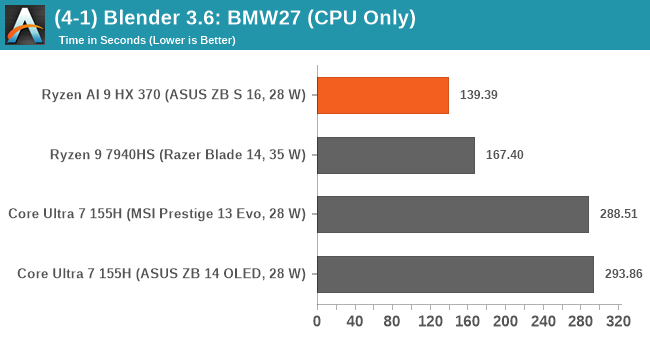
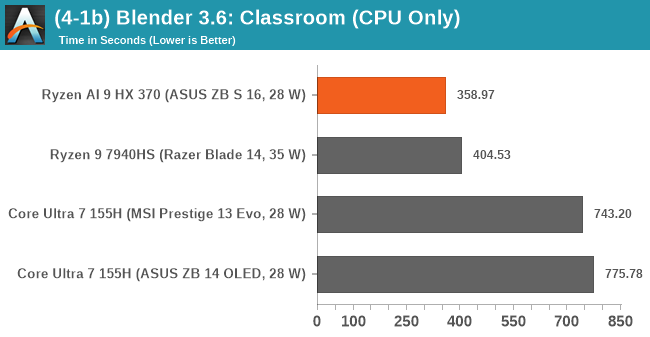
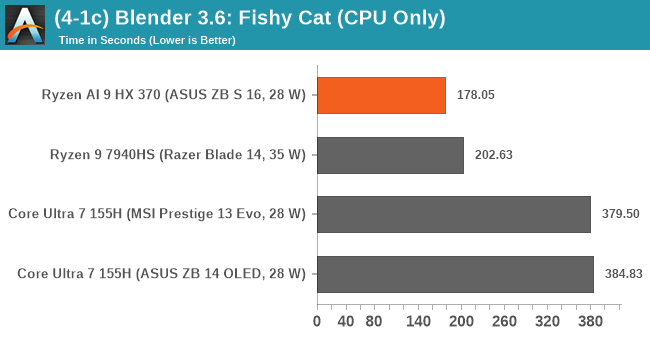
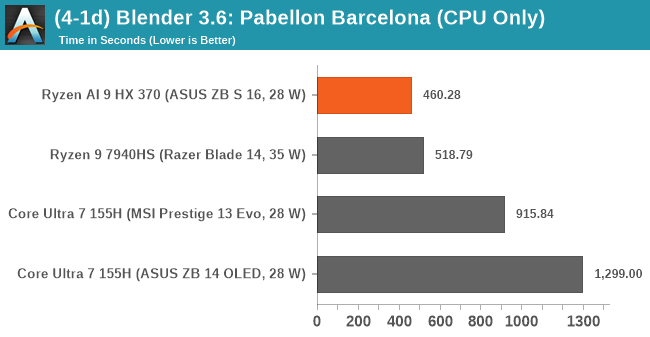
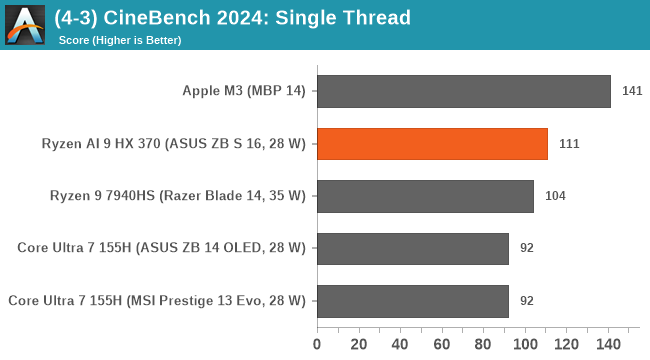
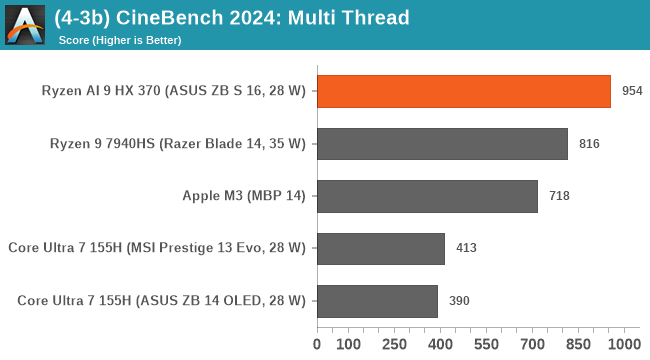
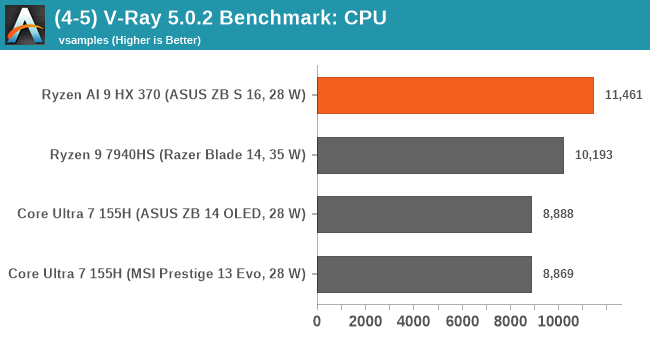
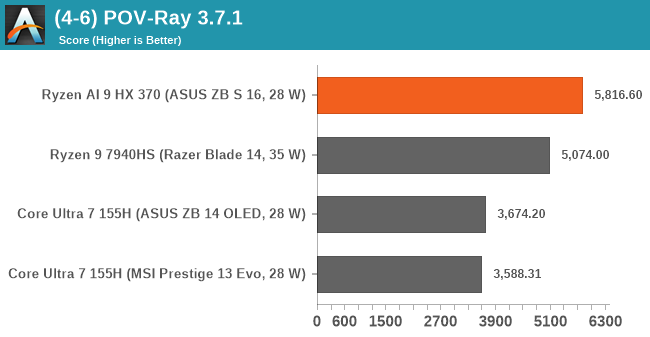
Starting off with the rendering section, the AMD Ryzen AI 9 HX 370 has finally come to the forefront with the Zen 5 and Zen 5c cores, with consistent wins in all of the multi-threaded rendering benchmarks we ran. In the Cinebench 2024 benchmark using the single-threaded test, we can see the Ryzen AI 9 HX 370 is ahead of its predecessor, the Ryzen 9 7940HS, by just under 7%; this is primarily down to the uplift to IPC performance, among other improvements from going to Zen 5 from Zen 4.
In the multi-threaded test in Cinebench 2024, the latest Strix Point with Zen 5 also shows dominance, beating the Ryzen 9 7940HS by just under 17%. It would be interesting to see a direct comparison in core count, as the Ryzen AI 9 HX 370 has four more cores, albeit four of them are full-fat Zen 5 cores, with eight compact Zen 5c cores, too. It's also worth noting that despite the Ryzen AI 9 HX 370 and the Intel Core Ultra 7 155H both having a 28 W TDP, there's no contest regarding raw firepower in rendering workloads.
Simulation
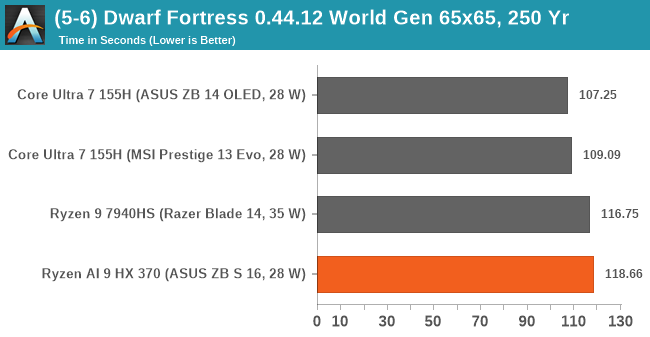
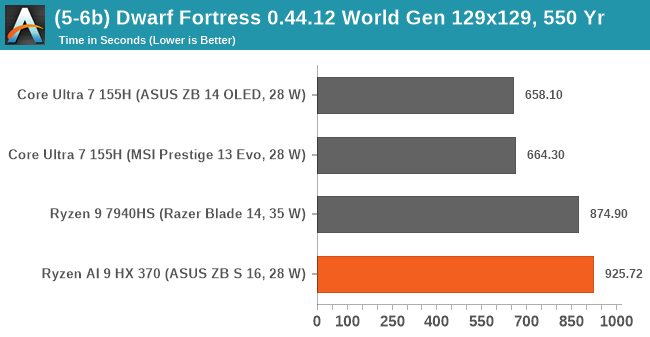
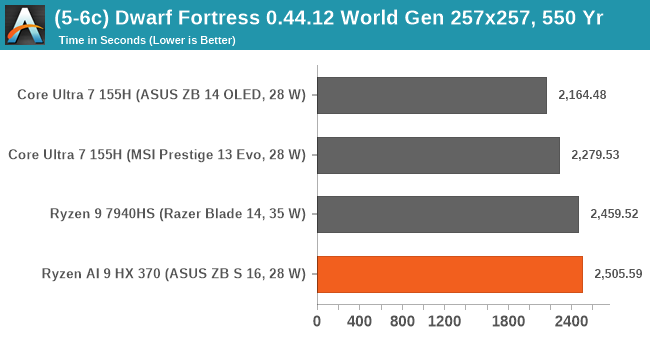
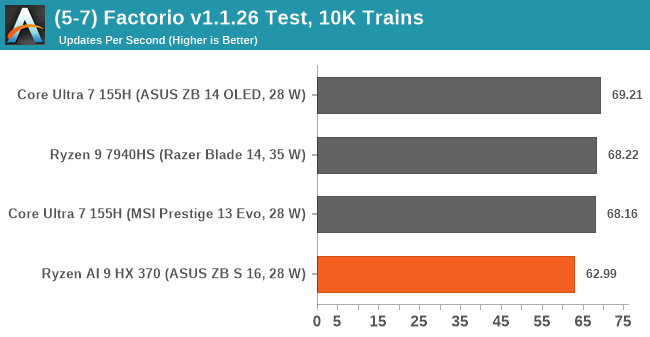
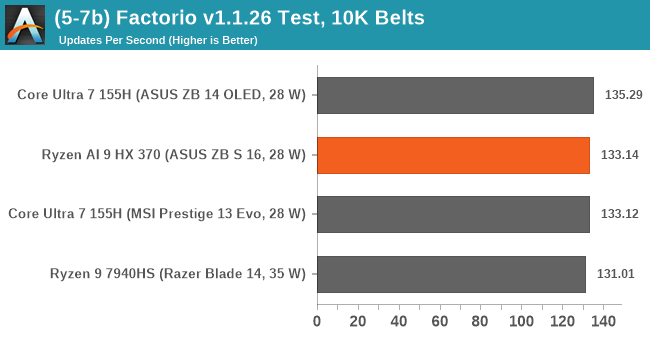
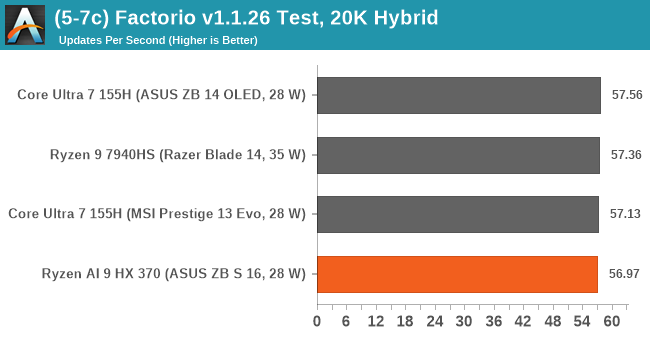
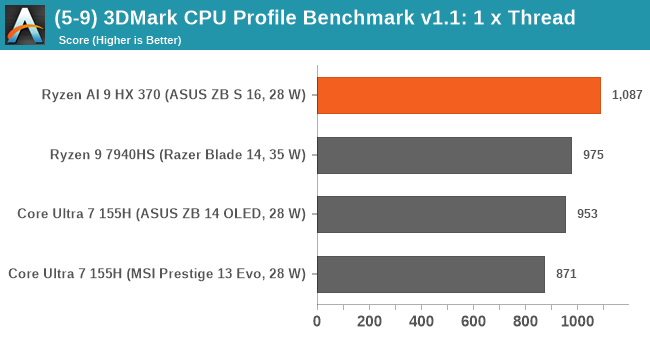
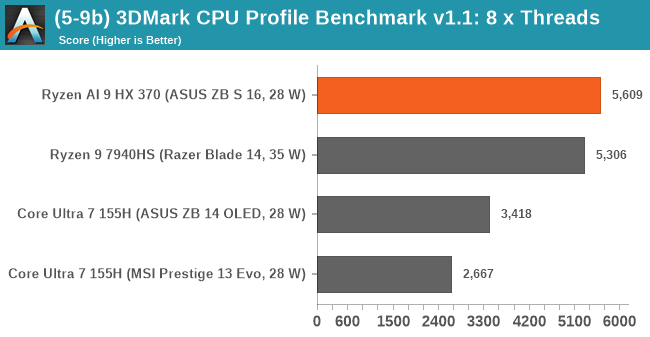
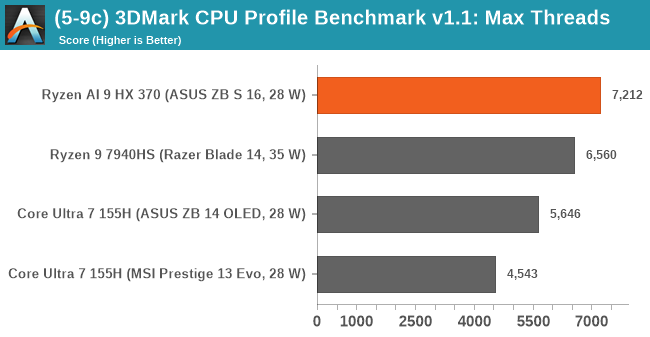
Despite winning the battle in rendering performance, we see the tables turn in both our gaming simulations, which consist of Dwarf Fortress and Factorio. In this scenario, Intel takes the lead, although, in the 3D Mark CPU Benchmark, the Ryzen AI 9 HX 370 comes out on top with 1 x thread, 8 x threads, and the maximum number of threads available from the chip.










72 Comments
View All Comments
Dante Verizon - Sunday, July 28, 2024 - link
Why are you comparing an ultra-thin design to a CPU with PL2 at almost 90w? The notebookcheck tests show that the Zenbook runs up to 50% slower than the ProArt chassy.Ryan Smith - Sunday, July 28, 2024 - link
Sorry, which notebook are you referring to? We have multiple Zenbooks here.Terry_Craig - Sunday, July 28, 2024 - link
He's probably talking about the Zenbook in the review: https://www.notebookcheck.net/Asus-Zenbook-S-16-la...Strix performs much worse on the Zenbook than inside the ProArt, probably due to more aggressive power and temperature management.
Ryan Smith - Sunday, July 28, 2024 - link
It's definitely not a high performance chassis, despite being 16-inches. The default TDP is just 17 Watts; AMD asked reviewers to bump it up to 28W.But this is what AMD sent out for review. Given the wide range of laptop TDPs out there, these review unit laptops can never cover the full spectrum. So it's more a reflection of what power level/form factor the chipmaker is choosing to prioritize in this generation.
The Hardcard - Sunday, July 28, 2024 - link
What is the 90W laptop in this review? The other laptops are listed at 28W and 35W here. I did not see any indication of the power specifications of the ProArt on the other site, just some numbers provided. I strongly suspect that laptop is running at top TDP, 45-54W.So, like, a different comparison.
Terry_Craig - Sunday, July 28, 2024 - link
https://www.notebookcheck.net/AMD-Ryzen-9-7940HS-P...Depending on the model, the 7940HS goes up to 100w.
The Hardcard - Monday, July 29, 2024 - link
But, is the 7940HS pulling 100w in this review instead of the reported 35w? Otherwise,, what is the point of the complaint?https://www.ultrabookreview.com/69005-asus-proart-...
The HX 370 is in a different chassis pulling 80w sustained. Does that make the 35w vs 28w happening here more fair? I mean, if what the chips can draw elsewhere somehow matters here at all?
eastcoast_pete - Monday, July 29, 2024 - link
It matters if one wants to look at the maximum performance possible, regardless of power draw. But, in addition to what Ryan wrote, the attraction of the HX Series to me is the strong performance at lower power draws. I would have actually liked to see performance comparisons at 17 W, which IMHO is of special interest in such thin and light notebooks. The higher end (> 50 W) will be if interest for Strict Halo, which as far as I can tell is supposed to take on notebooks with smaller dGPUs.ET - Sunday, July 28, 2024 - link
From the benchmarks here, the 370 looks somewhat disappointing on the CPU front, with some losses to 8 cores Zen 4. A hybrid architecture is always a problem. I wonder if future scheduling changes will help or if the small 8MB L3 for the Zen 5c cores is a problem that can't be overcome.The new GPU however looks like a good upgrade over the previous gen.
nandnandnand - Sunday, July 28, 2024 - link
It's hybrid with different cache amounts, but it's also two CCXs instead of one after 3.5 generations of simple 8-cores. It's hard to say what's screwing it up.Phoronix's review was more positive for the CPU. The main benefit is power efficiency:
https://www.phoronix.com/review/amd-ryzen-ai-9-hx-...
The reviews I looked at didn't look too good for the GPU. Maybe it will do better with more power, but what it really needs is memory bandwidth. Hopefully AMD brings some Infinity Cache to its mainstream 128-bit APUs in the future.